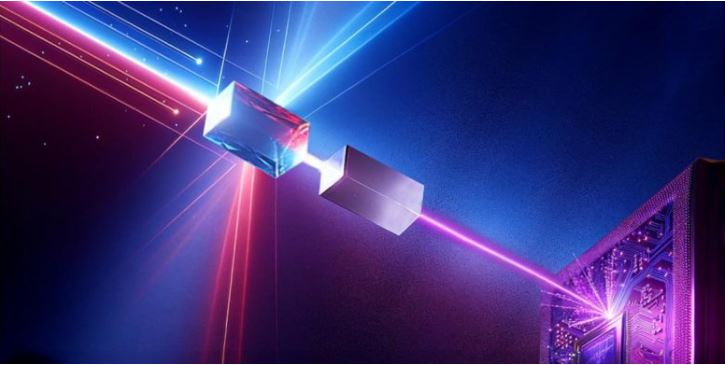


 11:20:49
11:20:49  2025-03-27
2025-03-27  650
650

A new solid-state laser produces 193-nm light for precision chipmaking and even creates vortex beams with orbital angular momentum – a first that could transform quantum tech and manufacturing.
Deep ultraviolet (DUV) lasers, which emit high-energy light at very short wavelengths, play a vital role in areas like semiconductor manufacturing, high-resolution spectroscopy, precision material processing, and quantum technology. Compared to traditional excimer or gas discharge lasers, DUV lasers offer better coherence and lower power consumption, making it possible to build smaller, more efficient systems.
Breakthrough in Solid-State Laser Development
In a recent study published in Advanced Photonics Nexus, researchers from the Chinese Academy of Sciences announced a major breakthrough: a compact solid-state laser system that can generate coherent light at a wavelength of 193 nanometers. This specific wavelength is a key tool in photolithography, the process used to etch detailed patterns onto silicon wafers, which are essential for building modern electronic devices.
How the 193-nm Laser System Works
The new laser system runs at a 6 kHz repetition rate and uses a custom-built Yb:YAG crystal amplifier to produce a base laser at 1030 nm. This laser is split into two paths: one is converted through fourth-harmonic generation into a 258-nm beam with 1.2 watts of output power; the other powers an optical parametric amplifier to generate a 1553-nm beam with 700 milliwatts of power. These two beams are then combined using cascaded lithium triborate (LBO) crystals to produce the target 193-nm light, delivering an average output of 70 milliwatts and a narrow linewidth of under 880 MHz.
First-Ever 193-nm Vortex Beam
The researchers also introduced a spiral phase plate to the 1553-nm beam before frequency mixing, resulting in the generation of a vortex beam carrying orbital angular momentum. This marks the first time a 193-nm vortex beam has been produced from a solid-state laser. Such a beam holds promise for seeding hybrid ArF excimer lasers and could have significant applications in wafer processing, defect inspection, quantum communication, and optical micromanipulation.
Future Potential and Impact
This innovative laser system not only enhances the efficiency and precision of semiconductor lithography but also opens new avenues for advanced manufacturing techniques. The ability to generate a 193-nm vortex beam could lead to further breakthroughs in the field, potentially revolutionizing the way electronic devices are produced.
Reality Of Islam |
|

This is the

A computer

Auburn Univ

Poisoning i
 9:3:43
9:3:43
 2018-11-05
2018-11-05
10 benefits of Marriage in Islam
 7:5:22
7:5:22
 2019-04-08
2019-04-08
benefits of reciting surat yunus, hud &
 9:45:7
9:45:7
 2018-12-24
2018-12-24
advantages & disadvantages of divorce
 11:35:12
11:35:12
 2018-06-10
2018-06-10
 6:0:51
6:0:51
 2018-10-16
2018-10-16
 2:2:13
2:2:13
 2022-10-08
2022-10-08
 6:14:3
6:14:3
 2023-01-18
2023-01-18
 4:2:19
4:2:19
 2022-10-10
2022-10-10
 10:55:53
10:55:53
 2022-06-13
2022-06-13
 2:33:4
2:33:4
 2023-02-15
2023-02-15
 7:0:55
7:0:55
 2022-05-17
2022-05-17
 10:35:40
10:35:40
 2022-05-26
2022-05-26
 5:41:46
5:41:46
 2023-03-18
2023-03-18
| LATEST |